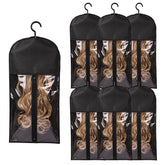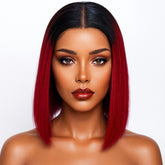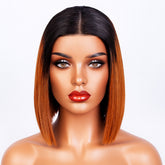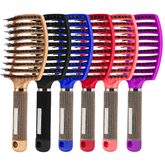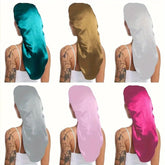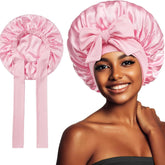Why sleek, shiny hair is perceived as healthier — new study

Women report that straight, well-aligned hair with high surface shine tends to be judged as younger, healthier and more attractive, according to research reported by The Procter & Gamble Company. The finding, covered by Phys.org, taps into long-standing ideas about how hair appearance influences social perception — and it raises practical and ethical questions for anyone who cares for hair, from consumers to professionals.
What the study found and why it matters
The core finding is straightforward: when hair looks smooth and reflects light evenly, observers are more likely to associate it with youth and health. The researchers linked two visual qualities — straight alignment and higher gloss — to more positive judgements about the wearer’s age and wellbeing. While the work originates from corporate research, it echoes a broader body of perception studies in psychology and vision science that show how surface texture and light reflection inform rapid social impressions.
Why does this matter for readers? First, it helps explain why certain salon services and at-home treatments—such as smoothing, conditioning and shine-enhancing finishes—are so popular. Second, it highlights the role of visual cues in social interactions: hair is not simply aesthetic, it communicates cues that affect first impressions. Finally, it prompts an important conversation about diversity of hair types, and the risk of equating certain textures or styles with ‘health’ in ways that can be misleading or exclusionary.
How shine and alignment signal health
From a practical standpoint, shine and alignment are not magic — they reflect the hair’s physical condition. Several well-established mechanisms explain the effect:
- Cuticle alignment: When the outer layer of the hair (the cuticle) lies flat and even, light reflects more uniformly from the surface, producing a glossy appearance.
- Smoother surface reduces scatter: Frizz, roughness and split ends scatter light, making hair look dull and less uniform. Smooth hair appears glossier and more uniform to the eye.
- Contrast and framing: Straight, sleek hair can create sharper lines that frame the face, which influences perceived facial symmetry and youthfulness.
These are generalised principles applicable across hair types, but how they present will vary with texture, density and natural curl pattern. For textured and curly hair, ‘shine’ can look different — more diffuse — yet still signal healthy strands when cuticles are intact and well-moisturised.
Practical, science-aligned ways to enhance shine safely
If you want hair that reflects light and looks well cared-for, focus on approaches that improve hair surface condition rather than masking problems. Simple, evidence-aligned steps include:
- Maintain cuticle health: Use conditioners and treatments that smooth the cuticle and restore moisture, such as protein-balanced conditioners and lightweight oils applied sparingly to lengths and ends.
- Reduce mechanical damage: Minimise harsh brushing when hair is wet, use wide-tooth combs, and avoid excessive tension that creates breakage and roughness.
- Protect from heat: When using hot tools, apply heat protection and work at the lowest effective temperature to avoid cuticle lifting and split ends.
- Trim regularly: Removing split ends keeps the hair shaft uniform so light reflects more consistently along the length.
- Colour and chemical care: When bleaching or chemically relaxing, be mindful of cumulative damage and follow professional aftercare to preserve surface integrity.
These tactics help hair look glossy without relying on heavy build-up or temporary films that create an artificial sheen but can weigh hair down or attract dirt.
Context and cultural sensitivity
It’s important to place the study’s conclusions in context. Perceptions of attractiveness and health are culturally shaped, and research that privileges straight, shiny hair risks reinforcing narrow beauty ideals. Curly, coily and naturally textured hair can be healthy and vibrant in different ways; shine may appear less glossy but still indicate well-maintained strands.
Professionals and consumers should use findings like this to inform care, not to judge. Judges of health and youth are visual and often subconscious, but they are not clinical measures. A balanced response combines the science of hair surface health with respect for texture diversity and individual choice.
Takeaway
The study reported by The Procter & Gamble Company and covered on Phys.org confirms what hair professionals have long observed: smooth alignment and surface shine influence how hair is perceived. Rather than chasing instant shine through heavy finishes, prioritise cuticle health, gentle handling and protection from damage. Most importantly, remember that ‘healthy-looking’ hair comes in many textures — and true hair health is best measured by strength, elasticity and scalp wellbeing, not appearance alone.
More From the Experts: Read interviews and insights from stylists and professionals on Hairporium Expert Articles.

